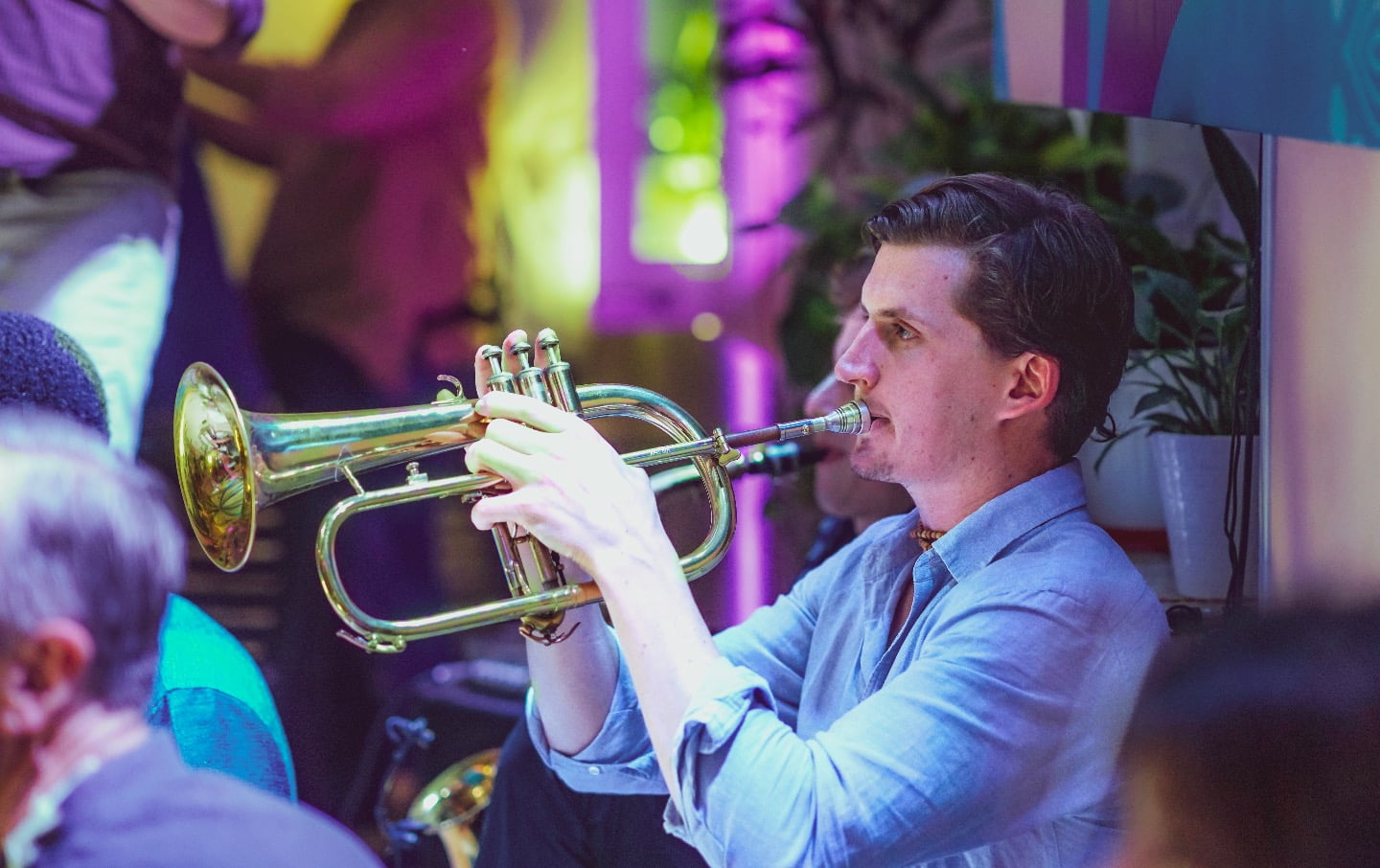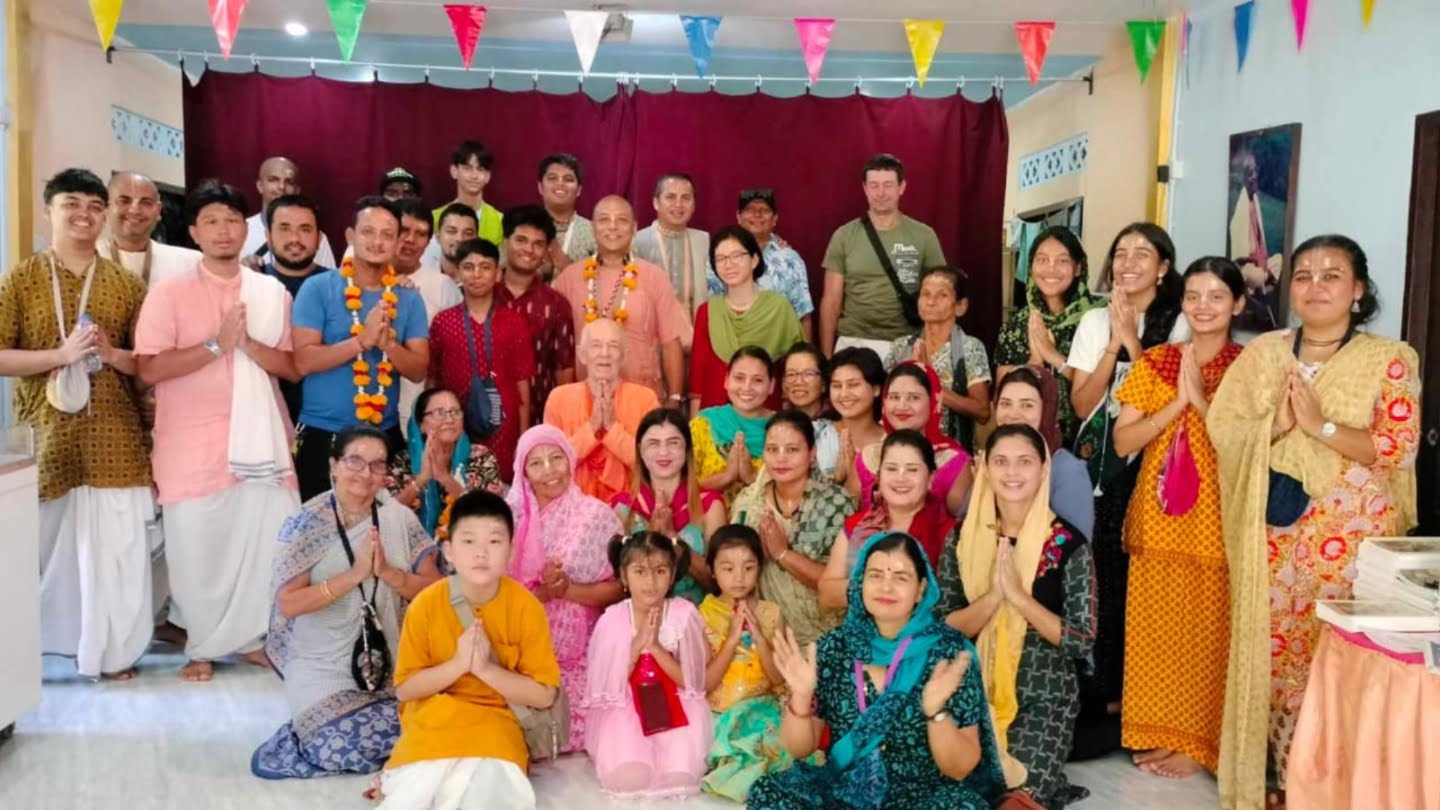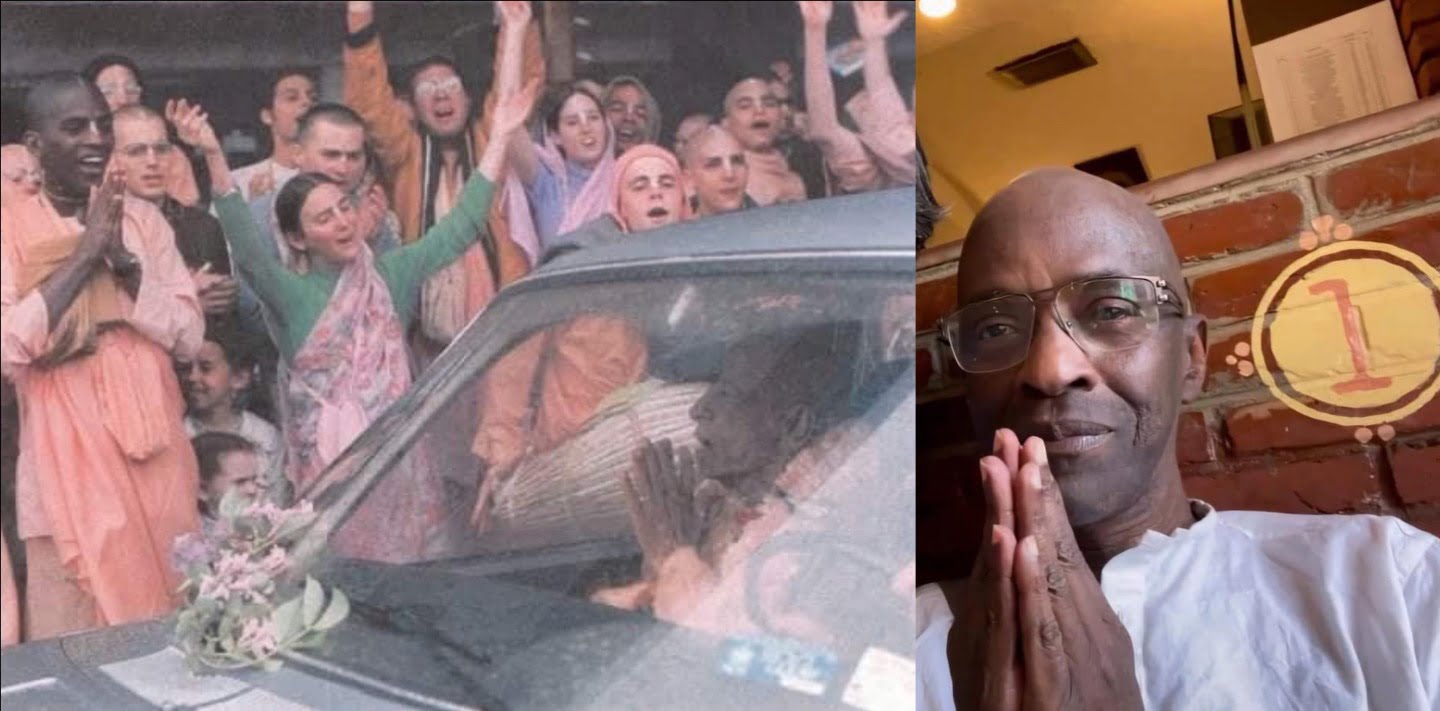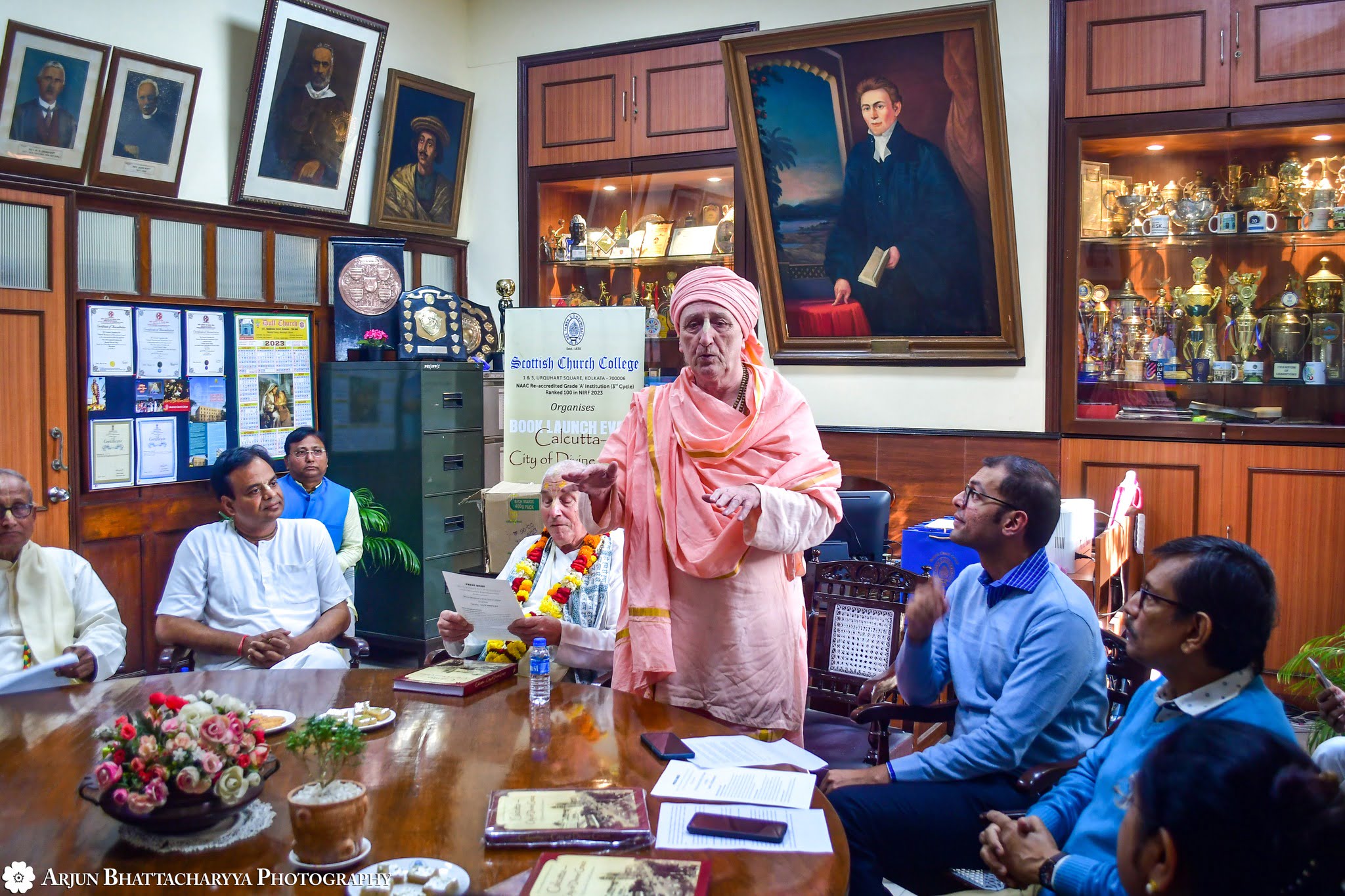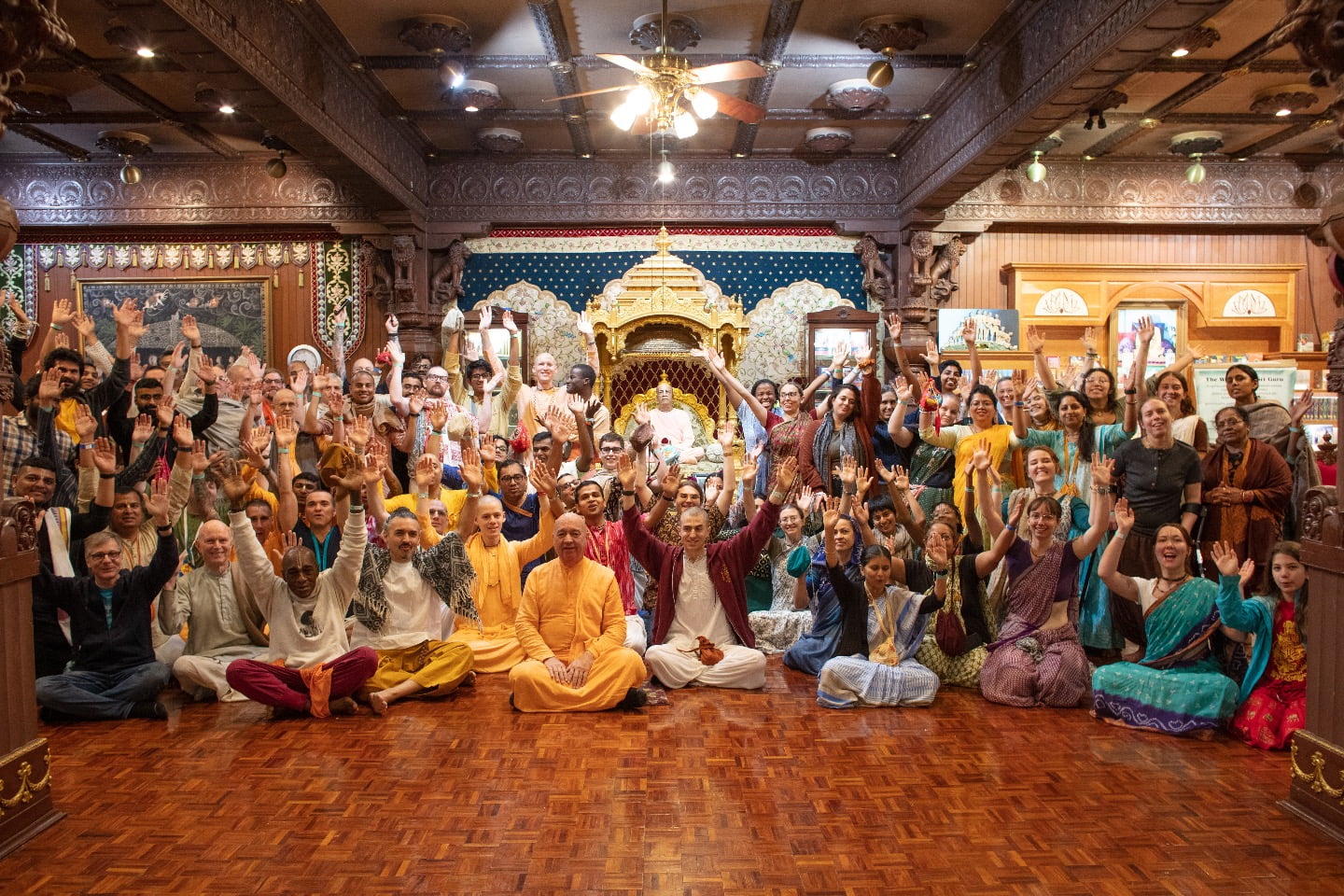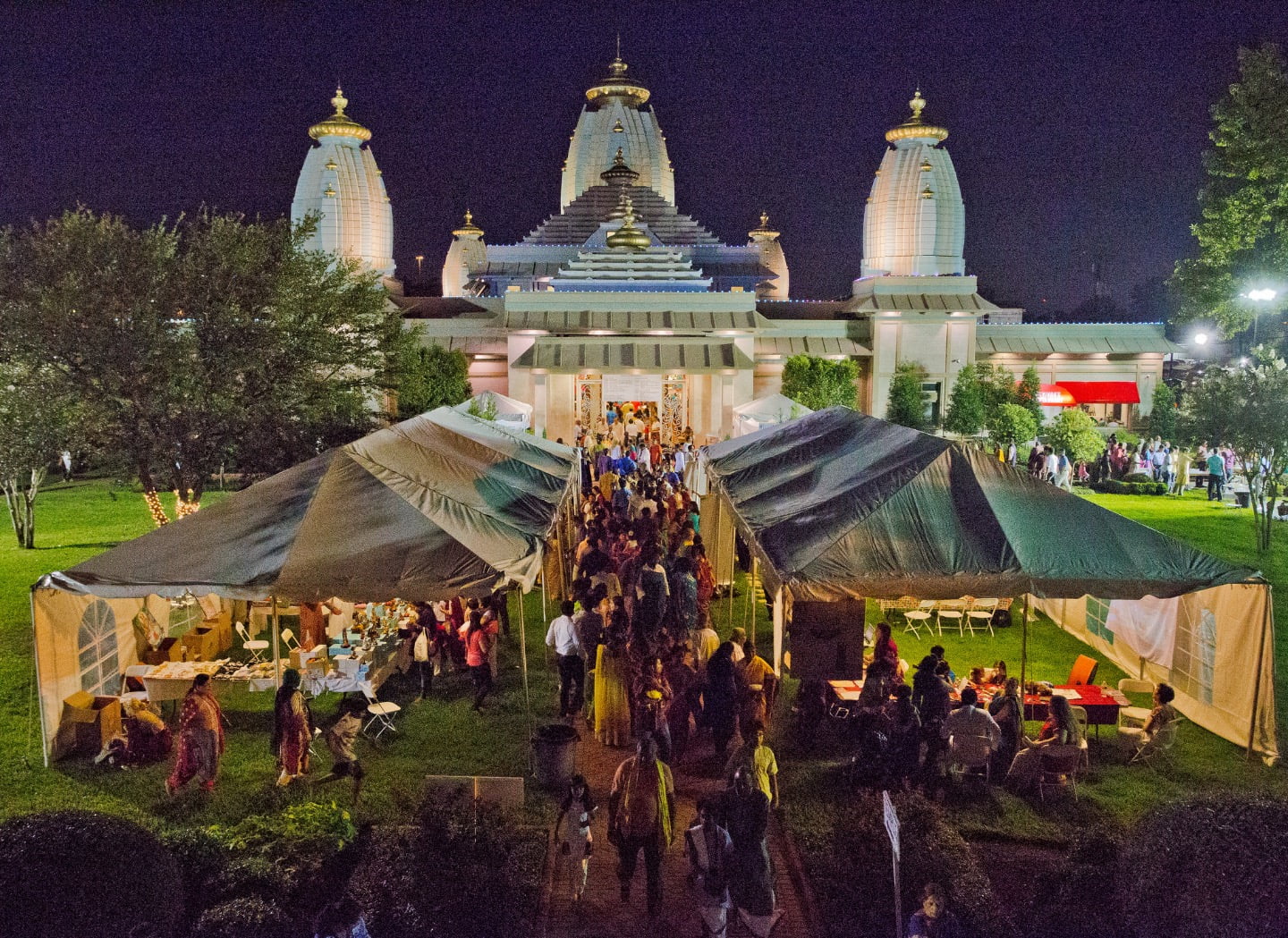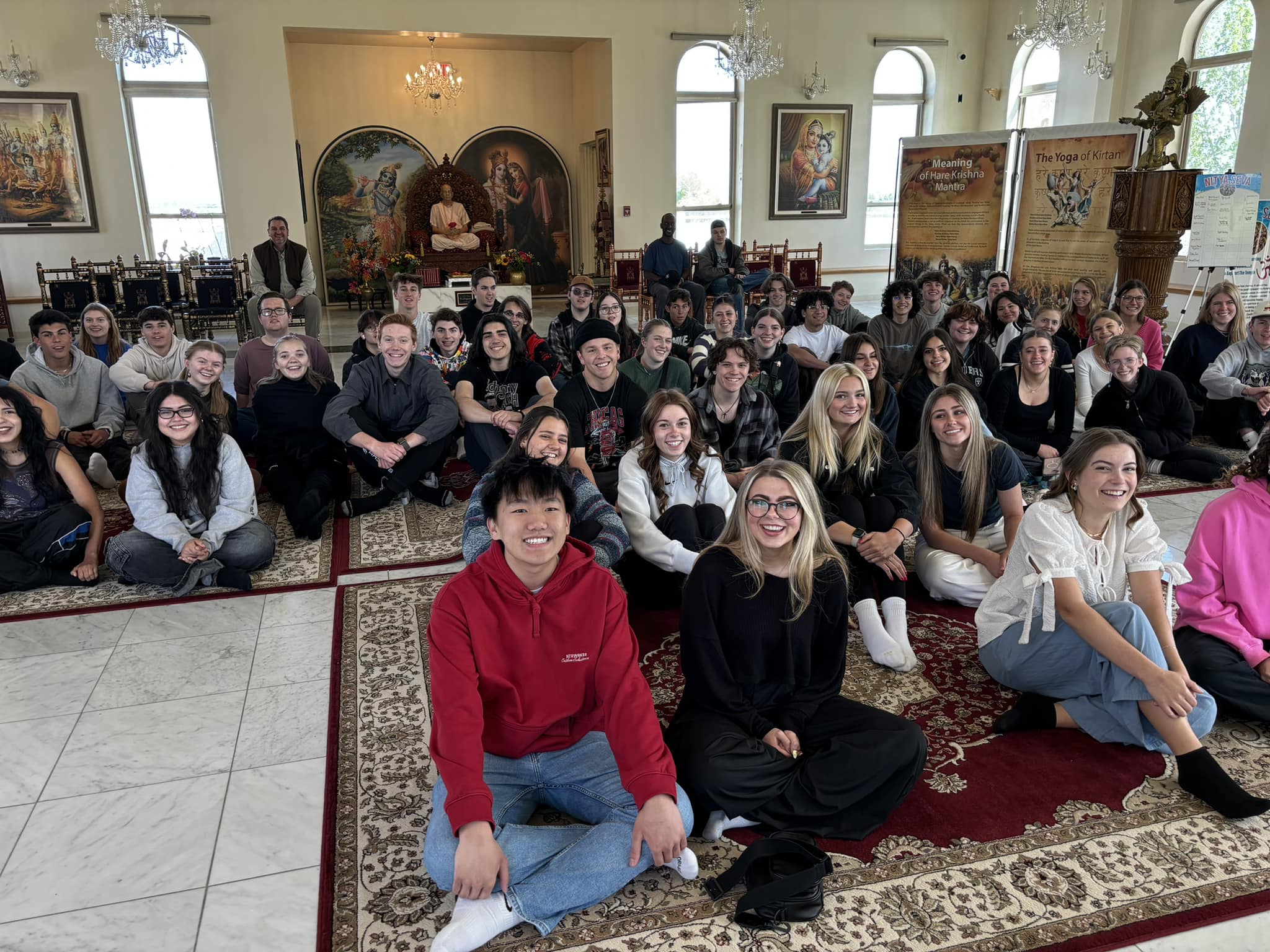New Mayapur Office Sets Prototype for Global Varnashrama Mission
By Madhava Smullen | Feb 13, 2011
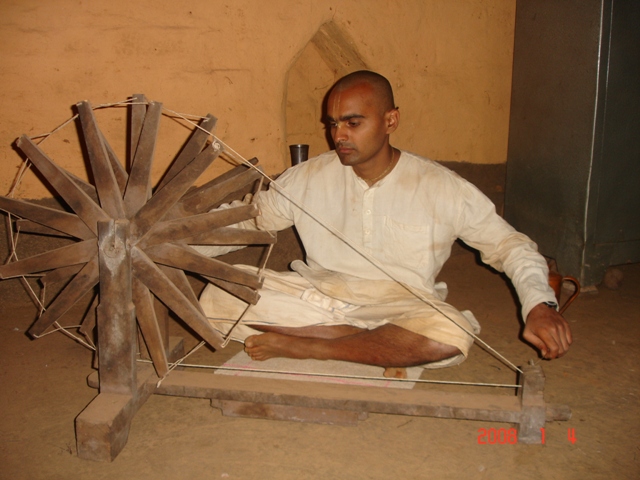
A small group of devotees attended the official inauguration ceremony for the ISKCON Daiva Varnashrama Ministry’s (IDVM) first regional office in Mayapur Dhama, West Bengal—which is set to become the prototype for a global mission—on January 20th.
Guests included the office’s manager Sudama Sakha Dasa, Mayapur Vanrashrama College coordinator Samba Dasa, and West Bengal Varnashrama Ministry overseer Prabhu Nityananda Dasa. The ceremony, which was filmed and televised live by Mayapur TV, included bhajans, prasadam for all, and a talk on the importance of the Varnashrama mission.
“Varnashrama is a combination of the two Sanskrit words “varna” and “ashrama”; varna refers to the social classes known in Sanskrit as brahmana (intellectual class), ksatriya (administrative and warrior class), vaisya (productive class) and sudra (worker class),” explains IDVM Minister Bhakti Raghava Swami. “Not to be confused with that modern perversion, the caste system, the varnas are closely connected with one’s natural aptitudes or inclinations, which help determine one’s future social occupation or profession in life. Traditionally in Vedic times, one would receive this training from a young age.”
Ashrama, meanwhile, refers to four spiritual classes—brahmachari (student life), grihastha (householder life), vanaprastha (retired life) and sannyasa (renounced life). These four ashramas exist to help us move towards Krishna consciousness and a natural and gradual detachment from the material world.
The word “Daiva” in Daiva Varnashrama means divine, and implies that the focus of all followers of this sytem is the same—unmotivated and uninterrupted devotional service to Lord Krishna.
Together, all three elements—Daiva, Varna, and Ashrama—comprise a scientific social structure defined and established by Krishna Himself to help meet the four basic needs of all human beings (physical, mental, social and spiritual). It’s this system that the ISKCON Daiva Varnashrama Ministry aims to provide and educate ISKCON members in.
Located in Room 137 of Mayapur’s Chakra Building, IDVM’s new office is its first regional branch and will service Eastern India. “Mayapur is a major hub for Eastern India, and also happens to be the World Headquarters of our ISKCON society,” says Bhakti Raghava Swami. “So there is huge potential there for us to cater not only to our Indian congregations, but also to reach out to foreign devotees visiting the holy place.”
The Mayapur office will be headed up by Sudama Sakha Dasa and IDVM National Coordinator Bharat Chandra Dasa, along with one assistant, and will be open from 10am to 4pm every day. It will be a multi-purpose hub handling secretarial, reception, resource and information, recruiting, and data collecting services. It will be a place where individuals can link directly with IDVM through different membership schemes. Books, DVDs, and pamphlets will be available for interested people, as well as a Bulletin Board and photo albums showing the activities of the Ministry.
“We also plan to hold seminars in Mayapur, both within the Mayapur campus and in neighboring schools and colleges,” says Bhakti Raghava Swami. “As Mayapur hosts its own Varnashrama College, we’re looking to work closely with college coordinator Samba Dasa, a staunch supporter of our mission. And finally, IDVM is looking into the possibility of starting a practical village community for Mayapur itself.”

Joining ISKCON in Ottawa, Canada in 1974, Bhakti Raghava Swami spent many years serving temples all over India, then moved to Indonesia in 2000, where he took up post graduate studies and completed a Masters’ Degree in Education. It was during this time that he began to take interest in the subject of Varnashrama, reading Srila Prabhupada’s 1956 essay “Conception of Gita-Nagari.”
“In it, even that far back, Prabhupada spelled out his clear vision for spreading his mission in four distinct and closely connected movements or waves,” Bhakti Raghava Swami says. “The first he called ‘Sankirtan Movement,’ referring to the Holy Names and books, the second ‘Deity Worship Movement,’ referring to establishing temples and Deities, the third ‘Spiritual Initiation Movement,’ referring to congregational preaching, and the fourth ‘Classless Society Movement,’ referring to the Varnashrama mission.”
This was a major discovery for Bhakti Raghava Swami. Inspired, he began a new rural community in Indonesia called Gita Nagari Baru, along with godbrother Gaura Mandala Bhumi Dasa. But he wanted to do more. After reading about Prabhupada’s four movements, and seeing that much of the first three had been accomplished but that there was little interest within ISKCON in the fourth, he felt a strong need to establish a system to promote and systematically organize the Varnashrama mission.
He began a website, which still exists, called Global Varnashrama Educational Social Cultural Organization (GLOVESCO.org) and invited devotees from different parts of the world to be part of the mission.
In 2003, one of his Indian disciples told him about a piece of land in Udupi, South India which was available and could be a good base for promoting Varnashrama. Bhakti Raghava Swami encouraged several devotees to form a trust under the GLOVESCO name and purchase the land, which they did in 2004. As it was located at the foothills of the Sahyadri Mountains, the project was given the name Sahyadri Sri Krishna Balarama Ksetra (SSKBK).
Returning to India in 2006 after being away for thirteen years, Bhakti Raghava Swami spent a lot of time at SSKBK. In 2007, at his request, ISKCON India’s Regional Governing Body formed the national “Varnashrama Development Committee”—of which he was a member along with other senior devotees—and formally adopted the position paper “Promoting Vrindaban Village Development in India.”
In November 2009, the National Varnashrama Development Committee officially established its own ministry, ISKCON Daiva Varnasrama Ministry for Promoting Rural Development in India. Sahyadri Sri Krishna Balarama Ksetra became its headquarters, and Bhakti Raghava Swami was appointed its Minister.
“Our mission is to promote, establish and demonstrate the ideals of simple living and high thinking, based on the concepts and principles of daivi-varnashrama dharma, as desired by Srila Prabhupada,” he says. “We work with the ISKCON India leadership to establish self-sufficient rural communities, giving special emphasis to training and education.”

The SSKBK headquarters itself serves as a training and educational center, and has its own Varnashrama College which has been host to a three month-course entitled Land, Cows and Krishna for the past three years. The project currently accommodates three grihasta families and several brahmacharis, who all engage daily in Deity worship, agriculture, and cow care, and receive guests on the weekends. They also produce various cow products, cook with wood collected from the forest on their land, and work to revive traditional technologies such as oil ghani (cold-pressing oil with the help of oxen), natural water lifting devices called Mothe and Ratha, and making gur (unrefined whole cane sugar).
SSKBK isn’t the only active Varnashrama project, however. IDVM is a national Ministry, and has eleven national departments spread out through different Indian states—several of which have accomplished much.
State Coordinator for Andhra Pradesh Hari Kirtan Dasa, for instance, oversees several village projects which provide training and education to children in the villages, organize summer camps and pilgrimages to holy places, and teach about organic farming and cow care.
There are also plans to introduce the Adopt a Village program, whereby villages will become connected with IDVM and villagers will have the opportunity to visit its headquarters and learn about the physical and spiritual aspects of simple living.
One of IDVM’s more active departments is called Varnashrama Media Productions (VMP). National Director Jananivas Dasa has already produced eight video documentaries related to the Varnashrama mission, and is preparing another series for release before Gaura Purnima in March 2011, bringing the total number of videos to about fifteen.
Another active department is Varnashrama Book Publication (VBP), managed by Sri Rama Dasa. So far, the press has printed four titles including Make Vrindavana Villages and The Fourth Wave, and is preparing another five titles by Gaura Purnima.
IDVM has been especially busy in recent months. “In November 2010, we held two four-day seminars in Baroda and New Delhi in collaboration with the GBC-promoted ISKCON LEADS leadership program, with a very positive response,” says Bhakti Raghava Swami. “And in December, Bharat Chandra Prabhu and I toured Rajasthan and Gujarat, visiting various rural ISKCON projects. Bharat Chandra also participated in a three-day National Convention on organic farming near Anand, Gujarat, attended by some 500 delegates.”

Meanwhile both devotees attended an all-India convention on Cow Protection in Bhilwara, Rajasthan, where Bhakti Raghava Swami was invited to give the inaugural speech to an audience of some 200 farmers, all of whom chanted the Hare Krishna maha-mantra in unison as he concluded.
While visiting Vrindavana, the village of Krishna’s birth in India, IDVM representatives have made contacts with goshalas (cow protection centers) and helped revive a school in the holy town of Govardhana, renaming it the Nityananda Varnashrama Gurukula.
The year 2011 will be even more busy for IDVM . At its headquarters at Sahyadri Sri Krishna Balarama Ksetra, the third annual Varnashrama College is winding up, with students from England, Sri Lanka and Australia participating.
From March 4th to 7th, the Ministry will hold its fourth annual Global Varnashrama Seminar in Mayapur in conjunction with the Mayapur Institute, entitled Save our Cows, Save our Villages. Two further four-day seminars in cooperation with ISKCON LEADS will be held in Tirupati and Mayapur before June.
Meanwhile, the IDVM national department Protection, Administration and Welfare, (promoting ksatriya dharma) will be making its first official presentation at the Tirupati meetings of ISKCON India’s leaders in April.
“In many ways, the new office in Mayapur is the Ministry’s first functional office,” Bhakti Raghava Swami says. “But the space isn’t enough to accommodate all our needs and activities, and so we are already planning three more regional offices to be opened by the end of this year or early next year. The Mayapur, West Bengal office will serve Eastern India, while new offices in Vrindavana, Uttar Pradesh; Mumbai, Maharastra; and Udupi, Karnataka will service Northern, Western, and Southern India respectively. These regional offices will help our growing amount of State Coordinators and National Directors to coordinate their various preaching strategies across the country.”
Despite the large amount of work IDVM has accomplished so far, Bhakti Raghava Swami feels it is still “ a baby.”

“There is an urgent need to network with ISKCON temples, leaders, and devotees in India,” he says. “Once more devotees understand the scope of our activities, and we have more manpower, we will gradually introduce various programs involving village preaching, networking with government agencies and the private sector as well. The regional offices will help all this happen.”
And the Varnashrama Ministry is already spreading beyond India, too. Bhakti Raghava Swami is planning an extensive Varnashrama tour which will begin in May of this year in North America, before traveling to South America, West and South Africa, Japan, Australia, Indonesia, and Cambodia.
In fact, he’s already overseeing Varnashrama activities in the two latter countries.
“The Indonesian island of Sumatra, of course, is where we started our original Gita Nagari Baru Varnashrama community, which is now home for thirty families, with a temple, guest house, library, and school,” he says. “Bhagiratha Prabhu, who completed his Bhagavat Sastri course at the Srimad Bhagavatam Vidyapitham in Govardhan is now introducing both a gurukula and Varnashrama College, and about eight rural projects are under development in the country.”
In Cambodia, where GLOVESCO has been operating for three years, a small preaching center sits on a 27-acre piece of land near Angkor Wat, which is slowly being developed.
Bhakti Raghava Swami also submitted a proposal to the GBC in December 2010 suggesting that a global Varnashrama ministry be established, and hopes that one day offices like the regional one in Mayapur will be in every country where ISKCON is present.
“It may take some time, since most of our devotees, including leaders, are absorbed in city temples and projects, which are mainly focused on the first three phases of Srila Prabhupada’s overall mission: the Holy Names and books, Deity worship, and cultivation of city congregations,” he says. “This is wonderful, but we would like to see more of a balance of all four phases of Prabhupada’s mission, the last one being ‘Make Vrindavana Villages,’ or Varnashrama. To do that, we must look out of the box, beyond our city temples—it’s not possible to make Vrindavana villages in the cities.”
As well as Srila Prabhupada clearly stating that fifty per cent of his mission remained incomplete without Varnashrama, previous acharyas such as Srila Bhaktivinoda Thakura also expressed that the easiest way one can advance as a Vaishnava is within the system of Varnashrama.
“Though all humans have a right to practice bhakti, those who follow the regulations of Varnashrama have a much easier time,” he writes in Chapter three of the Sri Chaitanya Siksamrita.
Ultimately, Srila Prabhupada’s long-term vision for the Varnashrama mission, which Bhakti Raghava Swami hopes will be eventually realized—is for it to completely overhaul society and revert it to the natural way of living. In this vision, the majority of people will be re-connected with the land, the cows and with Krishna, thus favoring and supporting the development of Krishna consciousness amongst the majority of people on the planet.
And that’s a vision we can all get behind.
To find out more about the ISKCON Daiva Varnashrama Ministry, please visit http://www.iskconvarnasrama.com.
To download the latest issue of The Eight Petals, a newsletter dedicated to the Varnashrama mission, please click here: http://www.iskconvarnasrama.com/cms/node/156.





